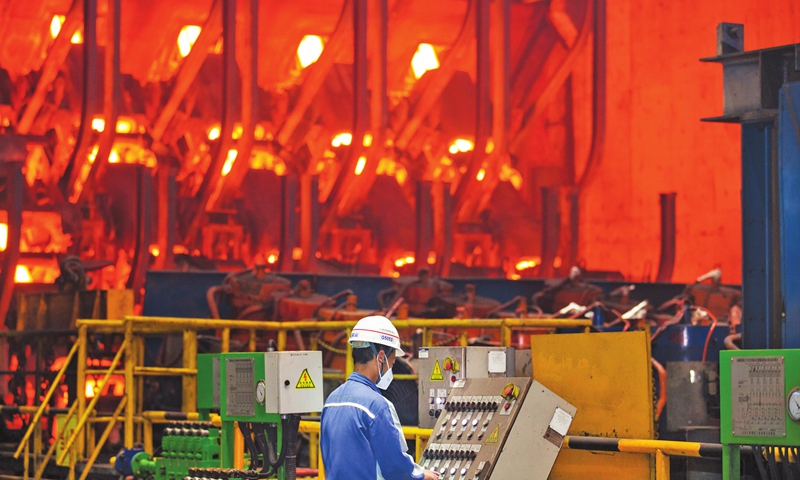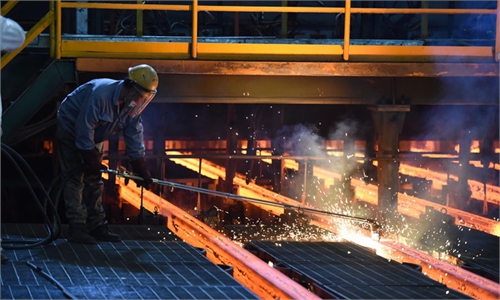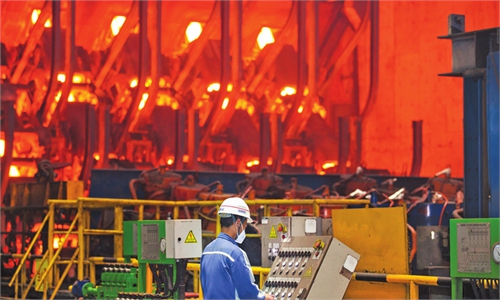
A worker rushes to finish orders for special steel products at a factory of China Baowu Steel Group's specialty steel subsidiary in Maanshan, East China's Anhui Province on Sunday. The company aims to achieve breakthroughs in core technologies this year, with its customized rail transit parts accounting for over 60 percent of the domestic market. Photo: cnsphoto
China's steel inventories have declined for two consecutive weeks, data showed, as the country is implementing measures to achieve the goal of reducing crude steel production during the off-season.
Weekly steel inventories stood at 21.41 million tons as of Thursday, down 155,700 tons from the previous week, according to data from industry portal mysteel.com.
Analysts said that the decline was partly due to the reduced output of crude steel, as China has vowed to reduce carbon emissions.
This is the low season for steel, and inventories usually rebound at this time of year. But after China's major steel-producing provinces and regions made plans to reduce output this year, market demand rose. This has led to strong transactions, especially in the off-season market, and a decline in inventories, Wang Guoqing, research director at the Beijing Lange Steel Information Research Center, told the Global Times on Sunday.
China's top economic planner and the Ministry of Industry and Information Technology proposed at the end of 2020 to focus on reducing the crude steel output of enterprises with a poor environmental performance and high energy consumption, to ensure the realization of a year-on-year decline in the nation's crude steel output in 2021.
However, it might be tough for some major steel-producing provinces to achieve that goal, as statistics showed that most such provinces recorded a year-on-year increase in crude steel production in the first half of 2021.
For instance, the crude steel output in East China's Jiangsu, the second-largest steel producer, and East China's Shandong Province, the third-largest, increased more than 10 percent year-on-year in the first half of this year.
Jiangsu has to cut its crude steel output by 8.12 million in the second half on a yearly basis to meet the goal of reducing steel output, according to an industry forecast.
So provinces have developed plans to cut output in the second half of the year, and some have already assigned detailed tasks to local enterprises.
"There's still scope for the market to rebound in the second half of the year, since provinces have been moving to cut crude steel output, on top of the nation's efforts to stabilize the prices of bulk commodities. But the rebound will be smaller than that recorded in the first half," Wang added.
Iron ore prices are also expected to keep plummeting. The main iron ore future contracts fell by 2 percent at the close on Friday, and they were down more than 9 percent for the entire week.


